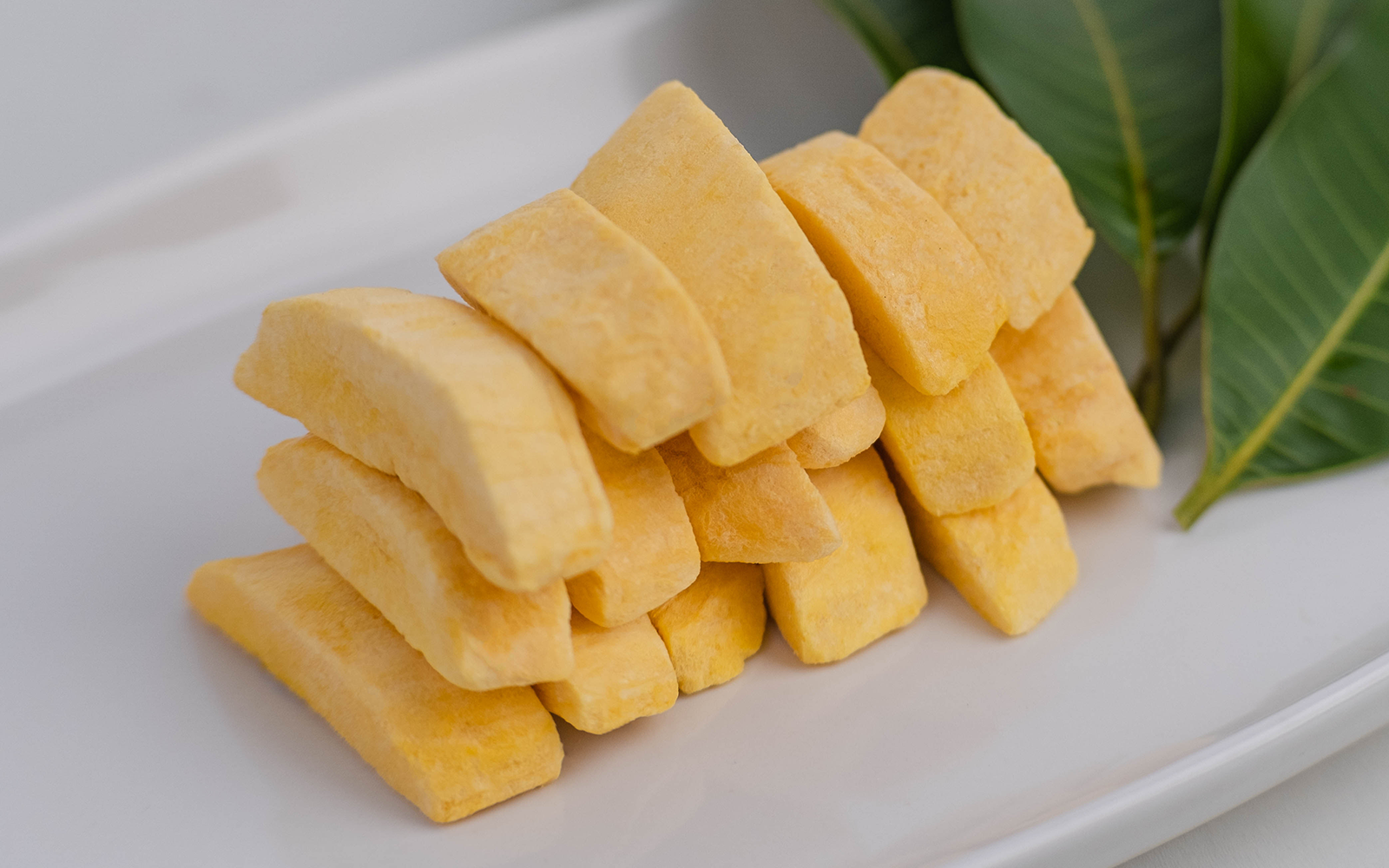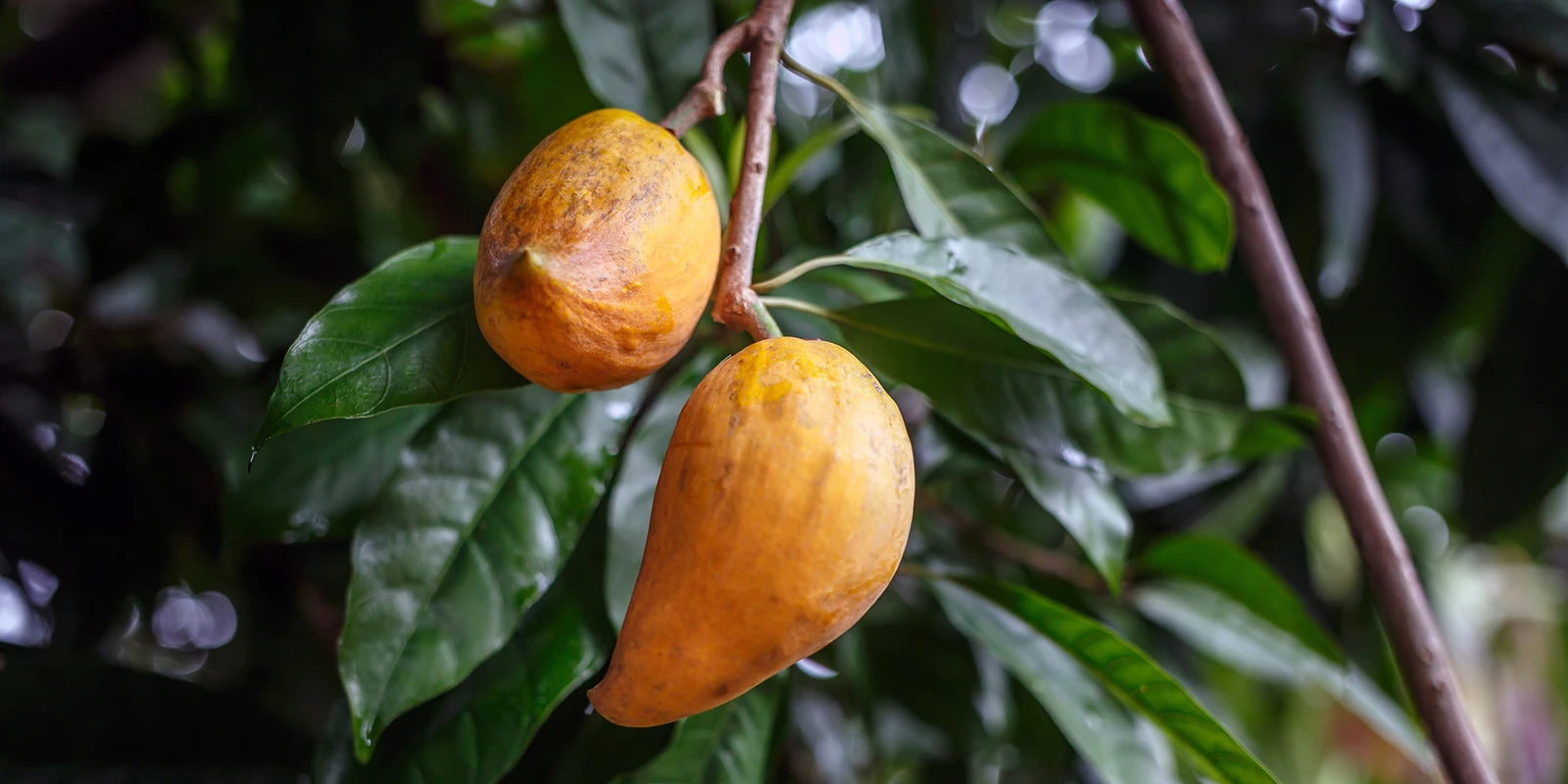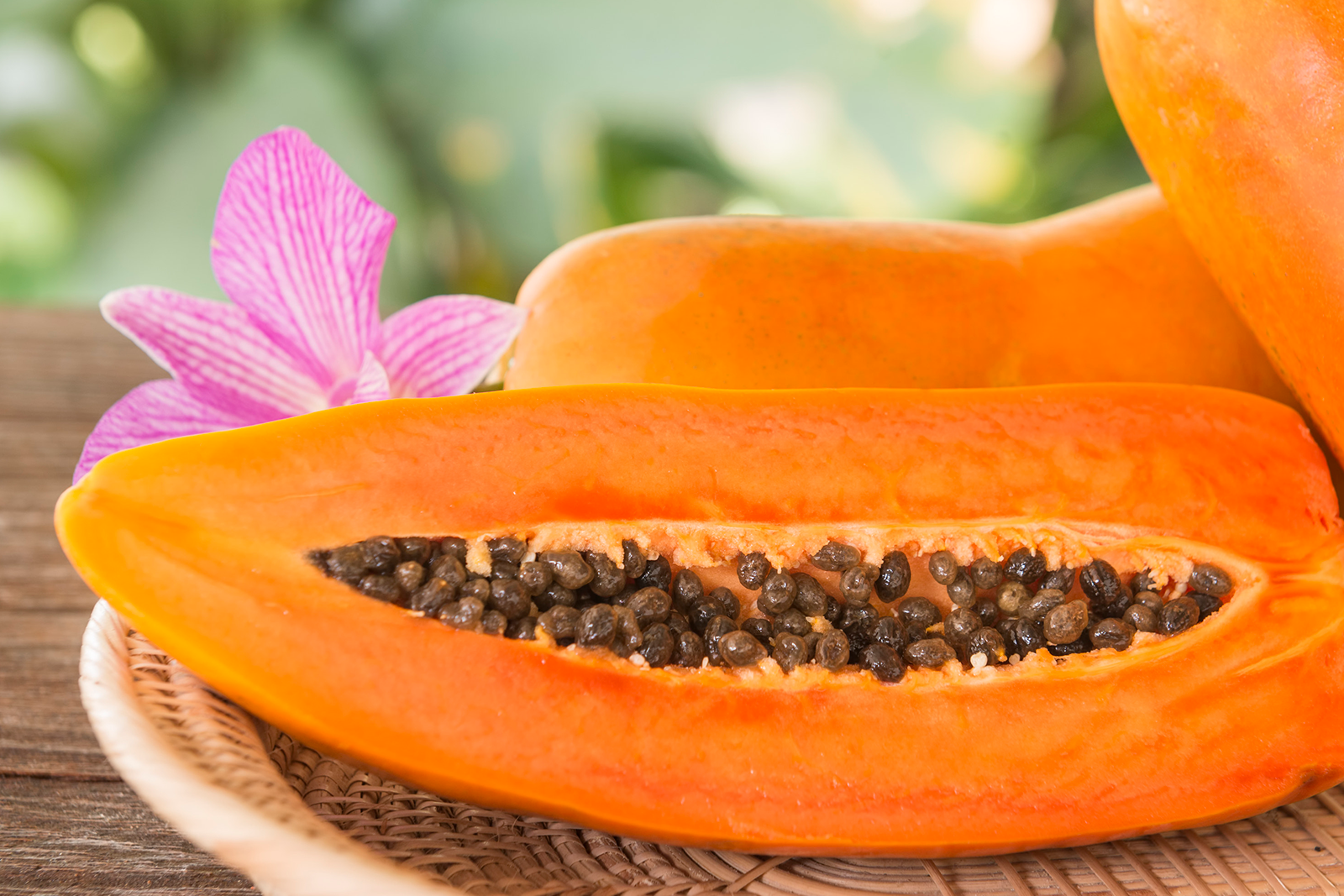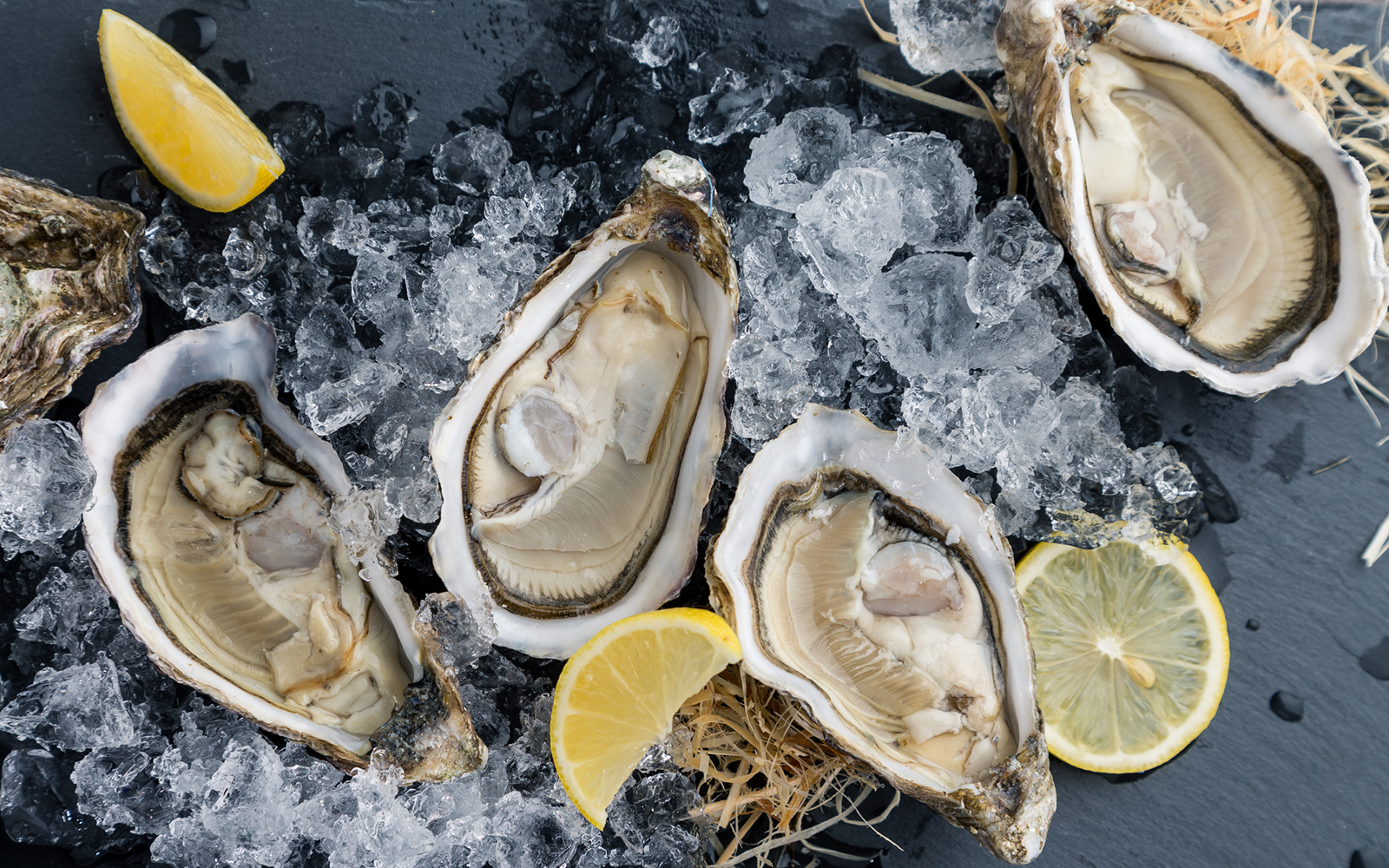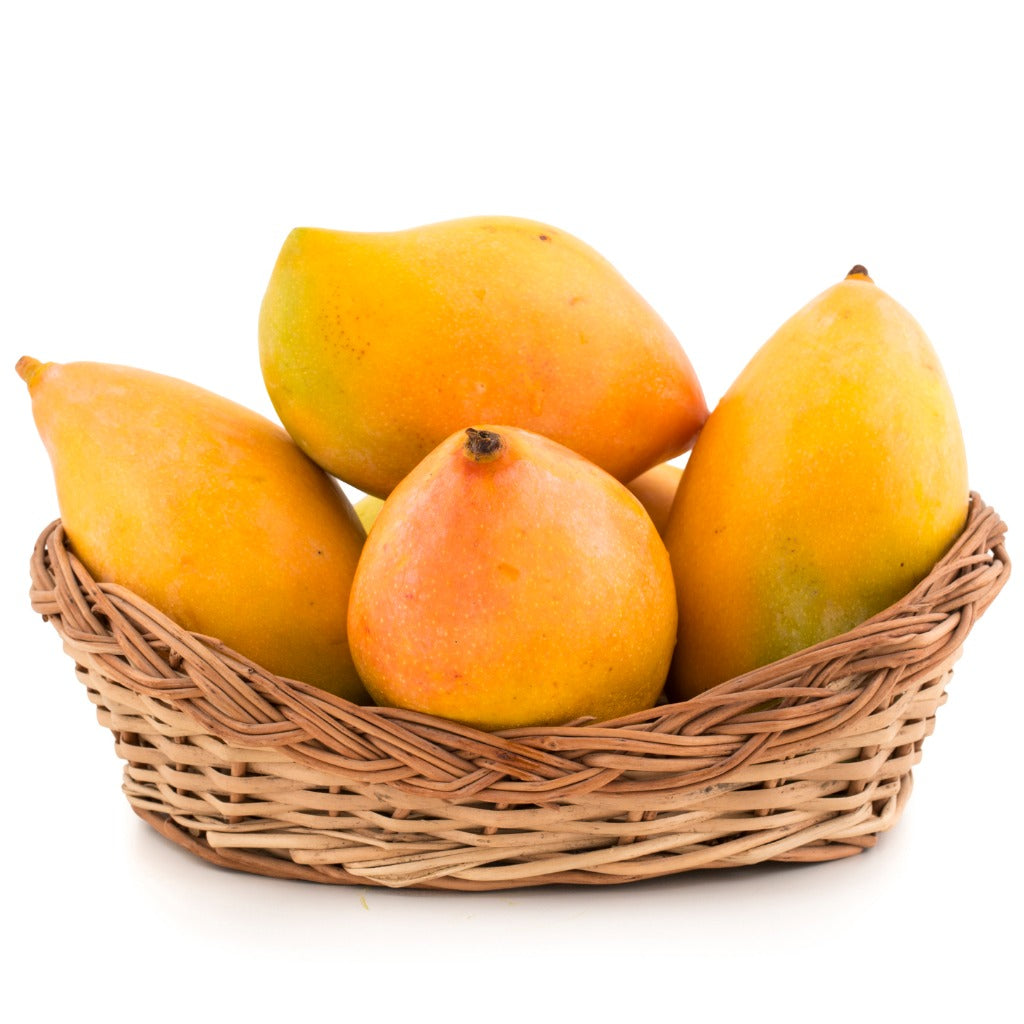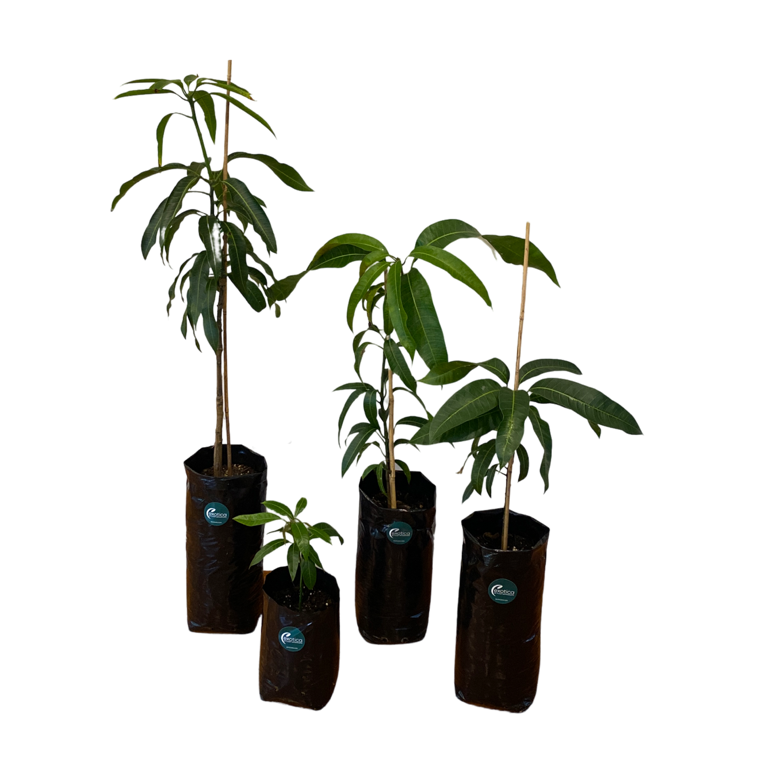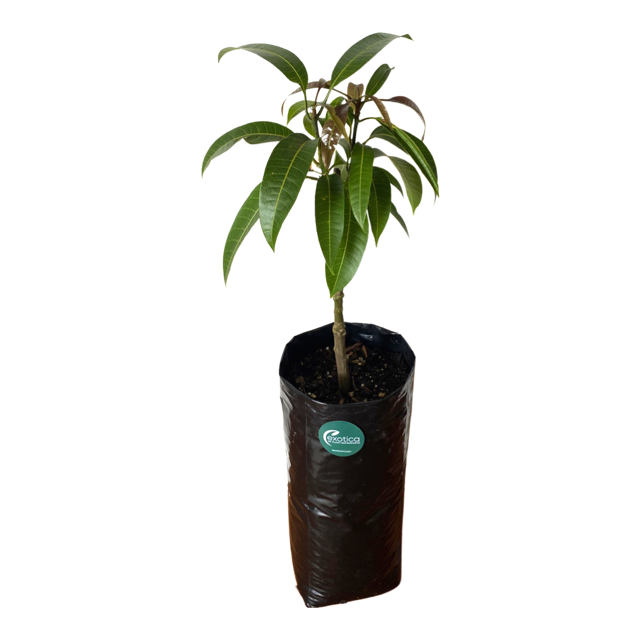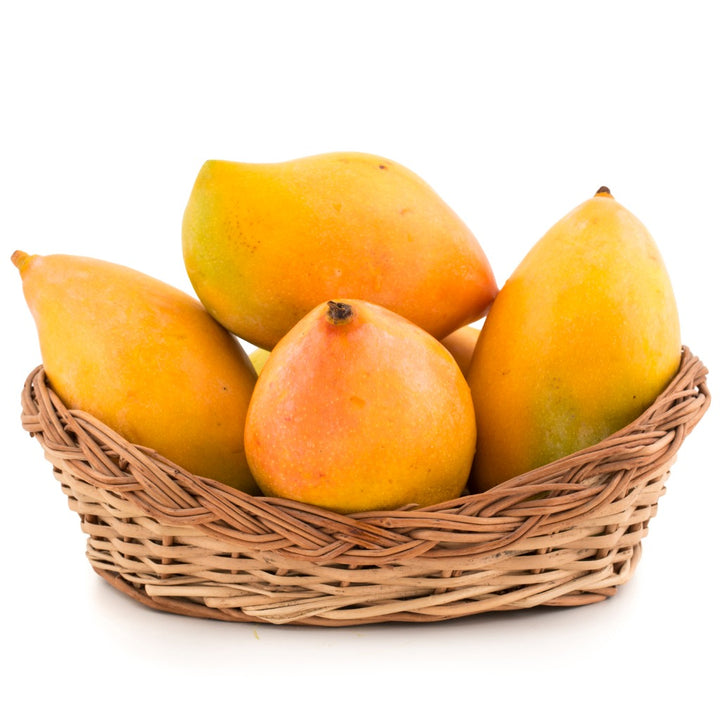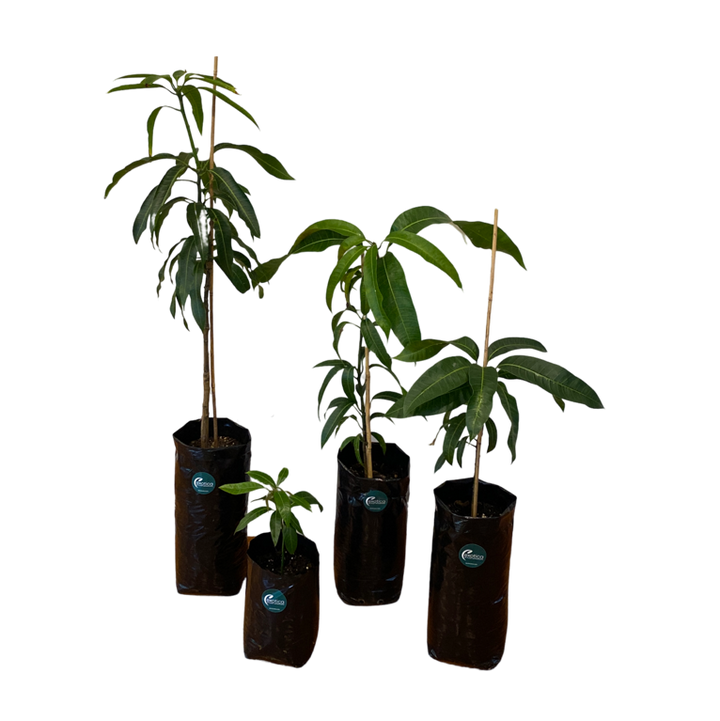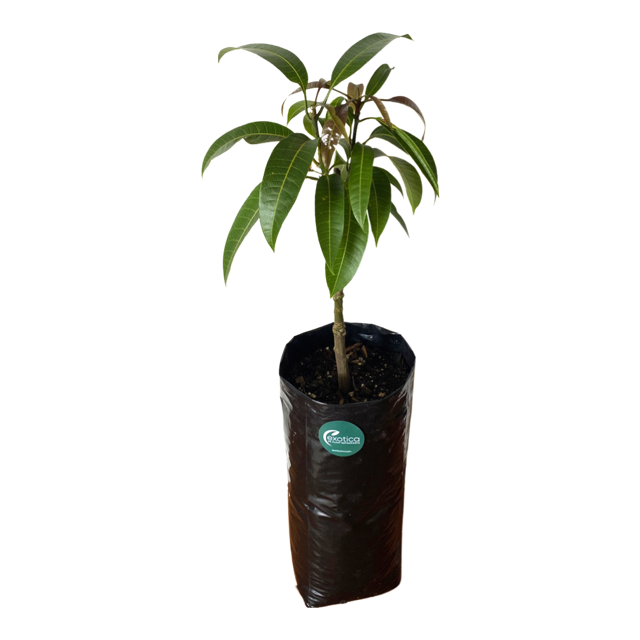Kesar Mango Plant
Kesar Mango (Mangifera indica)
Kesar variety of mangoes are considered to be one of the best mangoes, which are famous for their fruit quality, attractiveness fruit and pulp colour, taste and good shelf life. Kesar mangoes are mostly grown in Gujarat, Western India. Kesar Mangoes are commonly known as the queen of Mangoes. This variety is slightly smaller in size as compared to the Alphonso mango variety but offers a unique taste.
Mango plants thrive in frost-free conditions and flourish when shielded during their flowering phase. If you don’t have a greenhouse, it’s advisable to nurture the plant undercover in a pot for its initial four years. These plants prefer being rootbound, so retaining them in smaller pots can expedite their maturity and flowering. We’ve successfully cultivated several mango plants in pots, witnessing fruiting in as early as their fourth year. However, results can differ based on the care provided and adherence to growth prerequisites. Our best advise is to keep the plant in the greenhouse with good ventilation system, and must be under shade cloth. Whilst they do like the heat, they preferred not to be under direct sun light. Watering is very minimal and pay attention to any signs of browning or drying of leaves. Alternatively you could grow in pot outdoor under covered area.
Photo #2 gives sizing indications for small, medium, large and extra large plants.
Disclaimer:
Although some seeds growing plants are not true to type, it will still provide you with a delicious tasting fruit in years to come.
Plant Care
- Soil: Prefers well-drained, deep loamy soil with a pH between 5.5 and 7.5
- Watering: Water deeply but infrequently, allowing the soil to dry between waterings.
- Temperature: Ideal temperatures range from 24°C to 30°C. Sensitive to frost.
- Light: Full sun is necessary for healthy growth and optimal fruiting.
- Fertilising: During the growing season, use a balanced NPK fertilizer like 10-10-10 every other month. During flowering, switch to a low nitrogen and higher phosphorus and potassium formula such as 0-17-17 to promote fruiting.
- Pruning: Prune to maintain structure and remove any diseased or dead branches after the fruiting season.
- Mulching: Apply organic mulch around the base to retain moisture and suppress weeds.
- Pest Control: Monitor for pests such as mango hoppers and powdery mildew. Treat with fungicides and insecticides as necessary.
- Flowering and Fruiting: Flowers during the cooler months, with fruits maturing in summer, depending on the variety.
- Potting: Can be grown in large pots but will require significant space and meticulous care.
- Feeding Regime: Regular fertilization, especially phosphorus and potassium during the pre-flowering and fruit development stages, enhances fruit quality.
We ship our plants and garden supplies throughout New Zealand. Due to the increased costs of shipping and packaging, we now apply a delivery charge. After offering free shipping for three consecutive years, we find it necessary to adjust this policy to align with current market conditions. However, we have lowered our prices to help offset this change.
Please note, we do not ship plants or garden supplies internationally from New Zealand. We do export plants and tissue culture materials from our overseas nursery, which requires a minimum order. Please contact us at hello@exoticanz.com to discuss your specific requirements.
Shipping (plants) from:
North Island Urban $25
North Island Rural $35
South Island Urban $25
South Island Rural $35
Shipping Garden Supplies:
North Island Urban $20
North Island Rural $25
South Island Urban $35
South Island Rural $45
Delivery
- Our plants are available for shipment from September to April, depending on stock levels. Typical delivery times range from 5 to 7 business days, although they can take up to 10 business days depending on the destination.
- We take extra care in packaging; most of our plants are secured in bespoke inserts and shipped in individual boxes to ensure they arrive undamaged.
- Deliveries are scheduled once a fortnight, typically on Monday. If you place your order over the weekend, we aim to dispatch your plants on the following Monday. This scheduling allows our team to prepare your order thoroughly and ensures the courier has sufficient time to deliver your plants safely, avoiding any unnecessary delays over the weekend.
- All orders are shipped via courier track and trace service (not signature required)
- We cannot deliver to PO Box addresses.
- If you have a rural address, please contact us beforehand to discuss the best delivery options and avoid any potential issues.
Additional Delivery Information
- Most plants are shipped with soil. During the cooler months, we closely monitor weather conditions and may temporarily delay shipments if the weather is particularly severe. Our packing process includes adding insulation when necessary to protect the plants against temperature extremes.
- In summer, we ensure that plants are thoroughly watered before they leave our nursery. Occasionally, we may need to ship plants bare-rooted, particularly when they cannot be comfortably re-potted into smaller packaging for shipping. We will always discuss this with you in advance if your plant needs to be shipped in this manner.
- It's important to note that shipping can be a stressful experience for plants, often due to spending several days in a dark, confined space. While most plants withstand this with little to no stress, some may experience leaf drop. However, they generally recover quickly with some additional care, including proper watering and gradual reintroduction to light after arrival.


